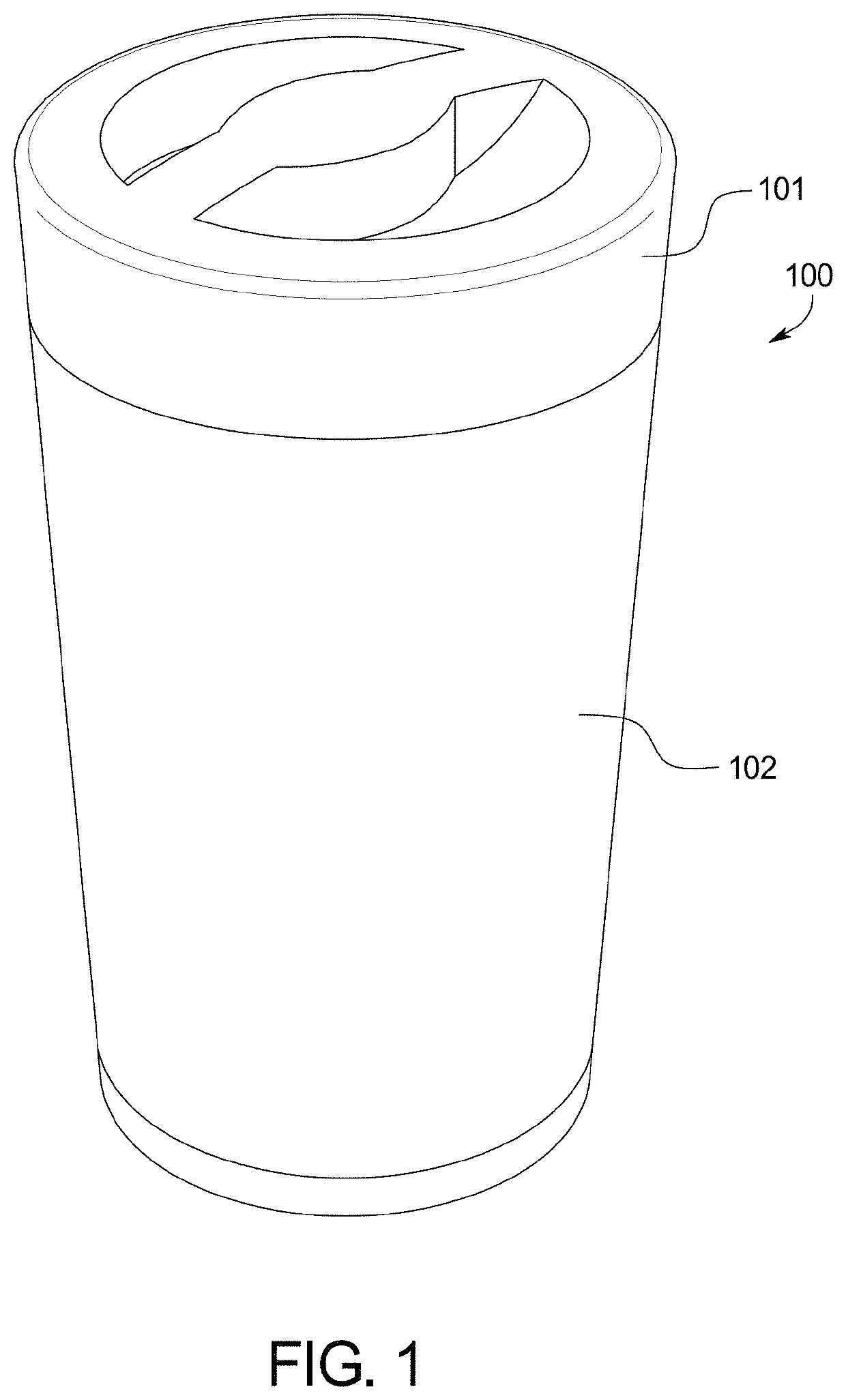Device and methods for transporting temperature-sensitive material
a technology for temperature-sensitive materials and devices, which is applied in the direction of containers preventing decay, caps, domestic cooling devices, etc., can solve problems such as unintended damage of contents within containers
- Summary
- Abstract
- Description
- Claims
- Application Information
AI Technical Summary
Benefits of technology
Problems solved by technology
Method used
Image
Examples
example 1
[0036]A Unit (umbilical cord blood) at an initial temperature of 23° C. was sealed in a zip lock bag containing appropriate absorbent material as per IATA requirements and was placed in the lower part of the container. The lid included two 5° C. PCM packs previously kept for 24 hours in a domestic freezer, at approximately −22° C.+ / −2° C. The container was maintained in an environment with temperatures ranging from 26° C. to 28° C. for a total period of 90 hours as seen in FIG. 7. The Unit's temperature remained below the threshold of 26° C., which is the maximum desired temperature for such biological units. The temperature of the unit had been gradually decreased to reach the final holding temperature of 9° C., over a period of 15 hours thus avoiding the effect of a “cold shock” that would otherwise damage the unit and affect the viability of cells. The temperature of the unit had been maintained at approximately 9° C. for a further 30 hours, providing ample shipping time at appro...
example 2
[0037]A Unit at temperature of 10° C. was sealed in a zip lock bag containing appropriate absorbent material as per IATA requirements, placed in the lower part of the container and closed with the lid loaded with two 5° C. PCM packs previously kept for 24 hours in a domestic freezer, at approximately −20° C. The container was placed in external temperature, ranging from 25° C. up to 29° C. for 90 hours. The Unit's temperature was kept between 4° C. and 10° C. for the first 48 hours and between 10° C. and 24° C. for the remaining shipping time of 42 hours. Total 90 hours within a temperature range of 4° C. and 24° C., as seen in FIG. 8.
example 3
[0038]A Unit at temperature of 28° C. sealed in a zip lock bag containing appropriate absorbent material as per IATA requirements, was, placed in the lower part of the container and closed with the lid loaded with two 5° C. PCM packs previously kept for 24 hours at normal room temperature approximately 28° C. The container was placed in an environment with external temperature of between about −20° C. and about −18° C. for a period of 30 hours. The Unit's temperature remained above the threshold of 4° C. as provided in FIG. 9.
PUM
 Login to View More
Login to View More Abstract
Description
Claims
Application Information
 Login to View More
Login to View More - R&D
- Intellectual Property
- Life Sciences
- Materials
- Tech Scout
- Unparalleled Data Quality
- Higher Quality Content
- 60% Fewer Hallucinations
Browse by: Latest US Patents, China's latest patents, Technical Efficacy Thesaurus, Application Domain, Technology Topic, Popular Technical Reports.
© 2025 PatSnap. All rights reserved.Legal|Privacy policy|Modern Slavery Act Transparency Statement|Sitemap|About US| Contact US: help@patsnap.com



